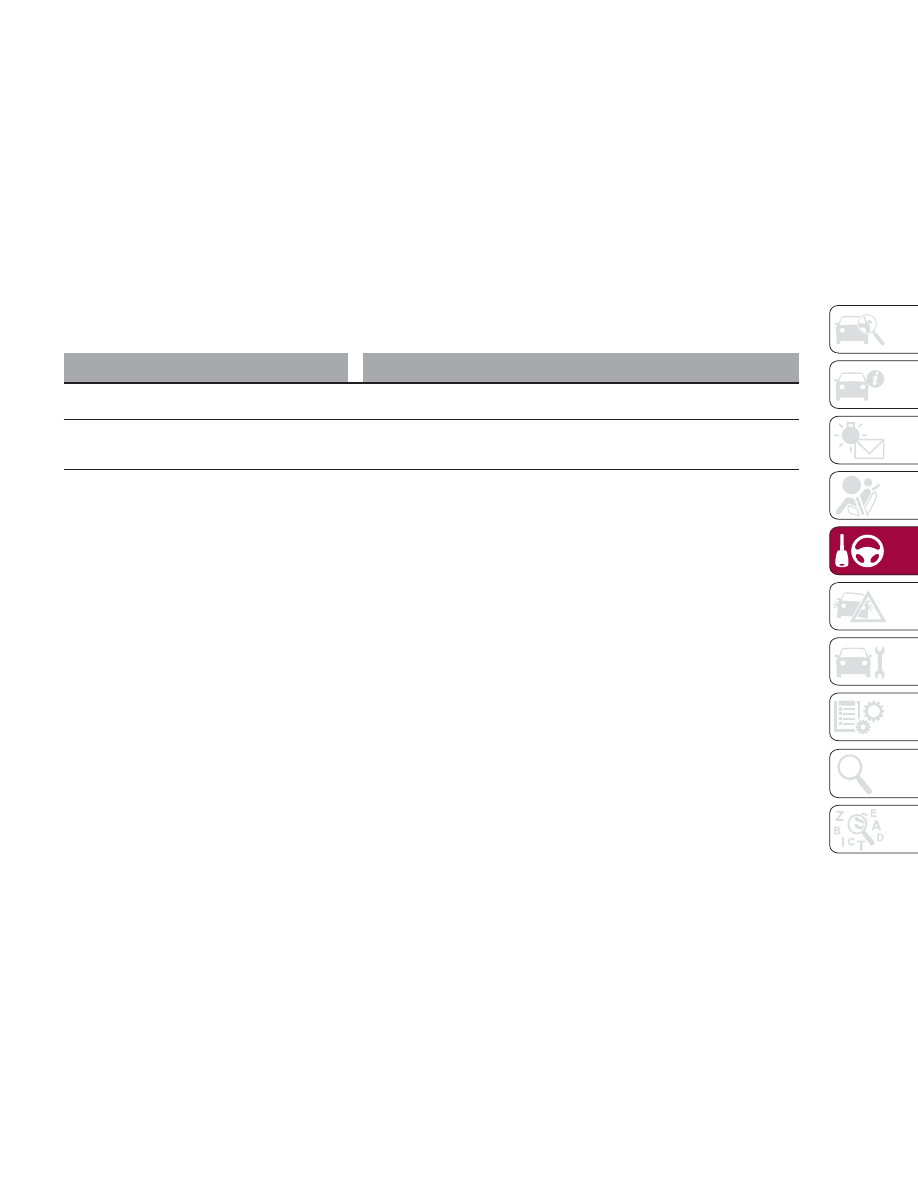Fiat 124 Spider (2019 year). Manual - part 11

When A Warning Alert Is Activated
The system notifies the driver of an obstacle by activating the audible alert.
Beep
How To Check
The audible alert is not heard.
The system may have a malfunction. Contact an authorized dealer
as soon as possible.
When the engine is cycled ON, or if the parking sensor
detects a problem while driving, an intermittent audible
alert is heard one to four times ( * ).
Remove any foreign material from the sensor area. If the system continues to
sound the audible alert, contact an authorized dealer as soon as possible.
( * ) The number of times the audible alert is heard changes depending on the malfunction location.
169